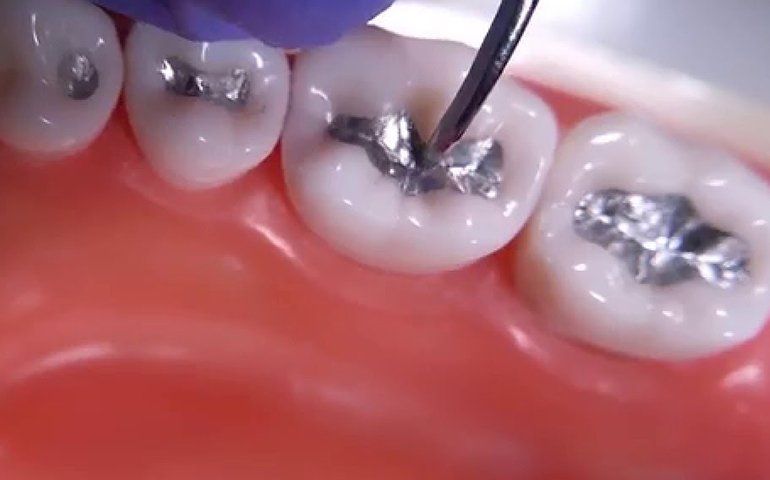Amalgam Vs. Composite: The Skinny on Dental Fillings

What’s the Difference Between Amalgam and Composite Fillings?
Two options that dental patients have for treating their cavities are amalgam or composite fillings. Composite fillings are white and blend in with the color of the patient’s teeth, while amalgam fillings are silver. Both types of fillings stop the action of tooth decay and help the tooth to function normally.
Amalgam Fillings
These types of fillings are made of tin, zinc, copper, silver and mercury. The mercury, which traditionally comprises 50 percent of amalgam, has become controversial over the years, as mercury is a toxic metal. Studies have shown that the levels of mercury people with amalgam fillings are exposed to are low.
Because of their silvery color, amalgams are used to fill cavities in the back teeth. They can last at least a decade and often last longer. They became popular because they were inexpensive, strong and durable. They can bear up under the grinding and chewing of the back teeth.
Besides the controversy over mercury, the amalgam filling color makes it non-aesthetic for the front teeth. Amalgam fillings tarnish with time and cause the margin of the tooth and filling to become discolored. They aren’t bonded to the teeth, but placed in pockets that the dentist makes in the tooth. If the filling needs to be replaced, the dentist may have to drill away even more of the tooth.
Composite Fillings
One difference in composite and amalgam fillings is that composite fillings are made of plastic and very fine particles of glass while amalgams are made of metal. Composites can be indirect or direct. Indirect fillings are made to fit an impression of a tooth that the dentist has already prepared. The patient is given the filling on their second dental visit.
Indirect fillings are placed directly on the tooth itself, and the dentist uses heat to cure the material. Direct fillings are cured with a special light. Composites are good for the front teeth. They’re also used for inlays, which are made to fill in the shape of a cleaned out cavity. Inlays may also take more than one visit to the dentist to put in place.
Composite fillings don’t last as long as amalgams. They last about five years, and they are more expensive. However, the dentist does not have to remove as much tooth material, and the material bonds to the tooth. Composites can be used with other materials. They need more time to be placed than amalgams and are added in layers to reduce the risk of shrinking, thus costing a little more than amalgam fillings.
Composites and amalgams are both good options for treating a tooth cavity. Ultimately, the choice is up to the patient, who should consult with their dentist. Contact us if you have further questions about your dental fillings.
The post Amalgam Vs. Composite: The Skinny on Dental Fillings appeared first on South Temple Dental.


Areas We Serve
Downtown Salt Lake City
84103, 84116, 84104, 84101, 84111, 84102, 84112, 84113, 84108, 84105, 84115, 84104, 84103
Business Hours
- Monday
- -
- Tuesday
- -
- Wednesday
- -
- Thursday
- -
- Friday
- -
- Saturday
- Closed
- Sunday
- Closed
All Rights Reserved | South Temple Dental
Dentist in Downtown Salt Lake City, Utah
